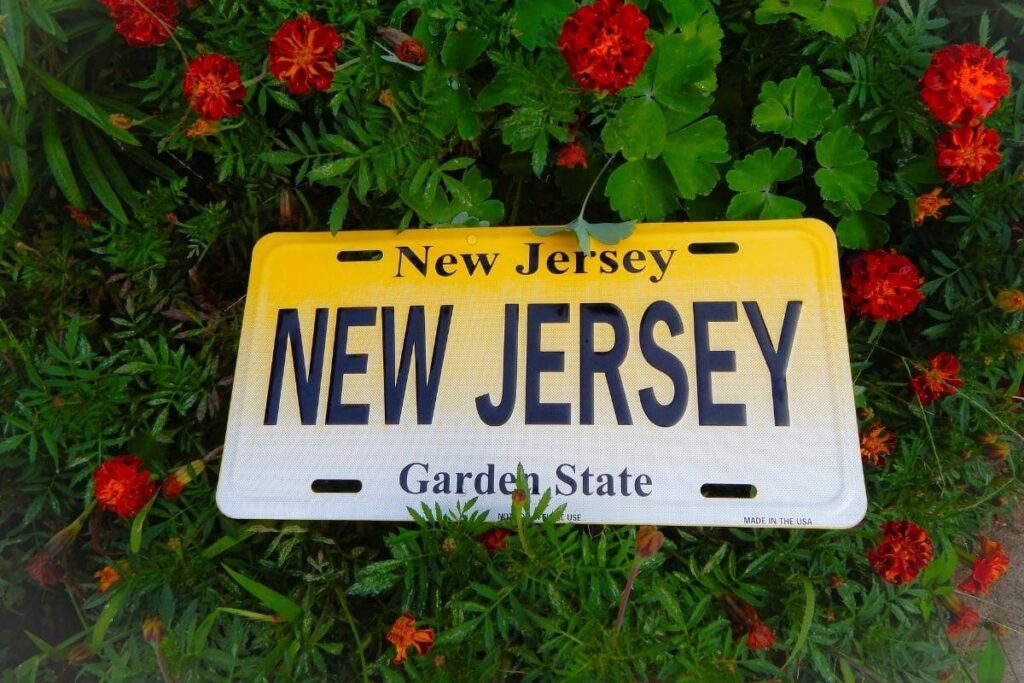
With over 700,000 acres of farmland scattered within its boundaries, it’s no wonder New Jersey sports the moniker “The Garden State.” Indeed, despite its relatively modest size, New Jersey ranks among the top producers of fruit crops like blueberries, apples, cranberries, peaches, and tomatoes as well as vegetable crops like asparagus, squash, bell peppers, cucumbers, and spinach.
But don’t think the green thumbs are just relegated to those farmers who learned to cultivate the temperamental landscape of the Pine Barrens. You can “grow native” and green up your own garden with a host of native New Jersey plants and we’re going to show you how.
What Is a Native Plant?
In the broadest terms, a native plant can trace its existence back prior to the arrival of the European settlers in North America. That means it was well-established in a region without the aid of human introduction. As time passed and the plants evolved, they became specifically adapted to thrive in particular areas.
They formed delicate, often interdependent networks with other flora and fauna in their locale. But for the purposes of the home gardener or landscaper, “native” plants can be considered as those that typically exist in the wild within 100 miles of your home and require a minimum of tending once they have a solid foothold in your garden.
Why “Grow Native”?
Many homeowners and landscape designers create landscaping plans with an eye toward attracting bees, particular songbirds or butterflies or deterring nuisance wildlife such as deer and rabbits. This often leads to the incorporation of exotic plants. The word exotic may bring to mind images of sandy shores and tropic breezes. But in the horticultural sense, exotic simply means non-native.
While these exotic plants may attract the wanted guests, their establishment in place of native plants can wreak unintended havoc on the native ecosystem. The result has contributed to the decline in many species in the country. The overuse of exotic plants has also undermined the distinct sense of place that native plants lend to their region, instead creating a dull, homogenous palette. But there are other reasons to “grow native.”
Since native species have specifically adapted to the region over time, they are predisposed to be resistant to regional plant diseases, harmful insects, and other nuisances such as nibbling deer. They are built to thrive. By choosing native plants, your garden is much more likely to grow hardy, beautiful plants.
You will also feel less strain on your pocketbook and your calendar when you opt for native plants. Because indigenous plants are adapted to local soil, water levels, etcetera, you can skip the extra bag of fertilizer at the garden center. You will also spend less on pesticides to eliminate unwanted bugs as many native plants have developed natural defenses against them.
Native flora and fauna have developed together in a unique, balanced ecosystem, many depending on each other for food, shelter and nesting sites. When you incorporate native plants in your landscaping designs, such as butterfly weed and wild bergamot, you are encouraging the health of the local ecosystem and inviting guests like butterflies and hummingbirds to visit.
One particular benefit of “growing native” that often gets overlooked is the improvement of groundwater quality. Because native plants root more solidly than their exotic counterparts, soil holds firm and provides better filtering of rainwater. Additionally, because native plants traditionally require less fertilizer and chemical pesticides, there are less pollutants to foul runoff that can make its way into streams, rivers, oceans and more.
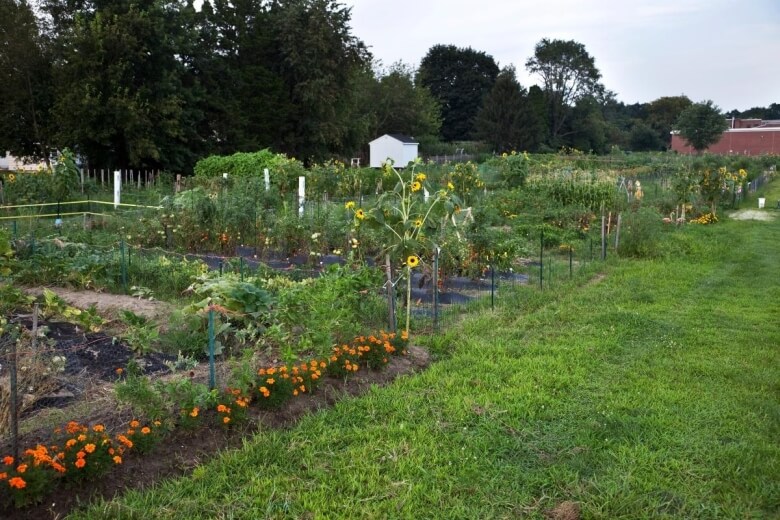
Native New Jersey Plants: A “Fresh” Start to an Existing Program
In January of this year, Governor Phil Murphy signed law S-83 into effect, legislation with the targeted purpose of initiating the Jersey Native Plants Program. Spearheaded by Senator Kip Bateman and a natural off-shoot, pun intended, of the recent “Jersey Fresh” initiative, the legislation was designed with the specific purpose of promoting native vegetation sales at local nurseries and garden centers.
The original “Jersey Fresh” program was started in 1984 as a means to alert consumers to locally produced goods. The program continues to support local farms that have played an intrinsic role in earning the state its nickname, and consumers also reap a variety of benefits from buying locally sourced foods. Local food is fresher and still retains its nutrients which can deplete over time traveling from other locales, and without the need for extended transport, local crops leave a smaller carbon footprint.
The Jersey Native Plants Program takes the “shop local” concept one step further and encourages folks to “plant local.” According to Barnes, planting vegetation native to New Jersey can “strengthen local farms, promote healthy eating, and help the environment.” But exactly which plants are native to The Garden State?
Navigating the Jersey Jungle
New Jersey has over 2,000 indigenous plant species. These include small trees, shrubs, and vines as well as herbaceous perennials, ground covers, carexes, and grasses. With the Jersey Native Plants Program and resources like The Native Plant Society of New Jersey you won’t have to feel like Indiana Jones in search of the Lost Ark.
Founded in 1985, The Native Plant Society of New Jersey is a non-profit organization which specifically concerns itself with dedicated appreciation, protection, and study of native New Jersey plants. The organization has compiled detailed lists and spreadsheets to help ensure you always know which native plants to plant in your garden to help it thrive and provide year-round beauty.
After all, New Jersey is a widely varied state, with many diverse ecosystems displaying a host of native shrubs, trees, and flowering plants. On their site, there are specific links that provide a concise roadmap to help you find the best native plants for your region and county. These lists are based on information provided by the United States Department of Agriculture.
Once you have identified which flowers, trees, and shrubs will do well in your landscaping plans, they also have developed a handy, printable PDF document listing local nurseries that carry native plants. In the event you can’t locate your preferred plant, the Plant Society has even provided a printable contact card you can leave with your garden center so they know how to reach you when your native plant is back in stock.
Another great resource for identifying which native plants will work well in your New Jersey garden is Jersey Friendly Yards: Landscaping for a Healthy Environment. Presented by the Barnegat Bay Partnership and the New Jersey Department of Environmental Protection, the site offers a wide variety of articles and database access to help you choose the best environmentally-friendly plants for your landscaping needs.
To Everything There Is a Season
The Byrds hit the nail on the head with their 1959 chart-topper. For everything there is a season, and native New Jersey plants are no different. Every one of the indigenous plants has favored season to thrive and make your home garden grow. We’ve included some seasonal highlights for you here.
Spring
Wood Anemone (Anemone quinquefolia)
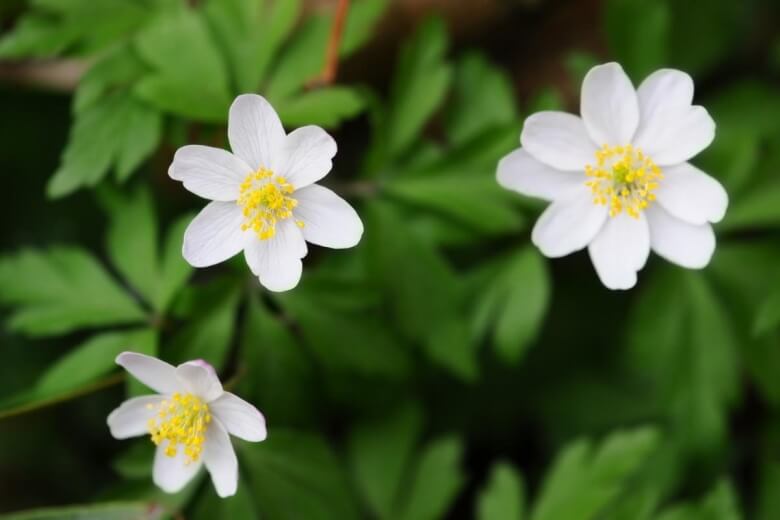
Also known as nightcaps, the wood anemone if a member of the buttercup family. This short, fragile plant sports a single white bloom and three stalked, deeply notched leaves. White and sometimes pink blooms erupt in early spring—in the wild you’ll see them along forest edges or in the woods from about April to June. This makes them ideal candidates for gardens with part or full shade. If you provide them with rich, damp soil, they will colonize, creating a ground cover.
New Jersey Tea (Ceanothus americanus)
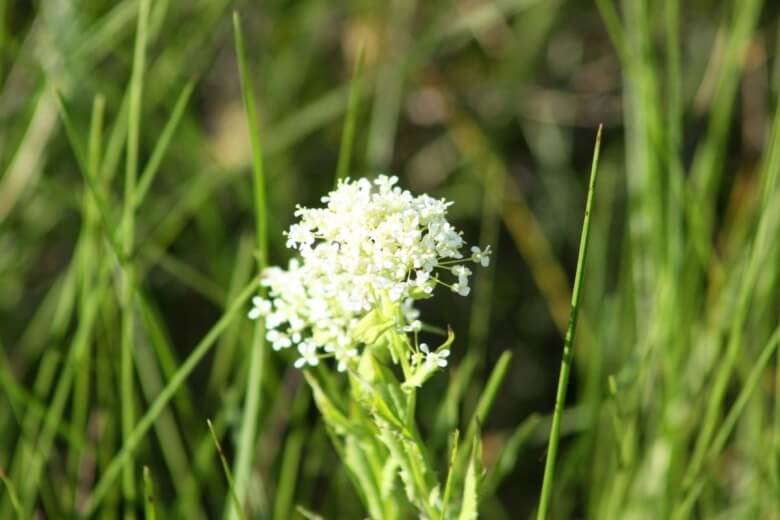
Sometime around March and April is time for tea—New Jersey Tea, that is. If you’re looking for a low-profile, deciduous shrub, this three-foot tall upright bush is perfect for you. While early leaves are tinged with a dusky gray, they green as the plant matures. The leaves can, in fact, be dried to make a caffeine-free tea.
Blooms cluster at the branch tips and will attract pollinating insects. Several beautiful species of butterfly are particularly attracted to the New Jersey Tea, including the blue Spring and Summer Azures and the rich brown Mottled Dusky Wing. The shrub prefers partial or full shade. Be aware—sun can crisp it. It favors low to medium watering, with dry to moist soil.
Summer
Purple Coneflower (Echinacea pallida)
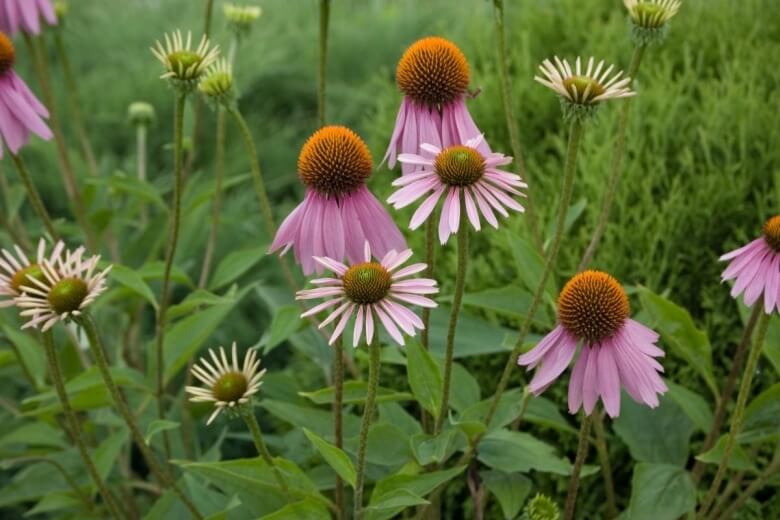
If you prefer your flowers to be pretty self-sufficient, the Purple Coneflower is a must-have native choice. Great for adding a spectacular splash of early color to your summer garden, this three-foot plant blooms with pale pink or purple flowers.
Great Blue Lobelia (Lobelia siphilitica)
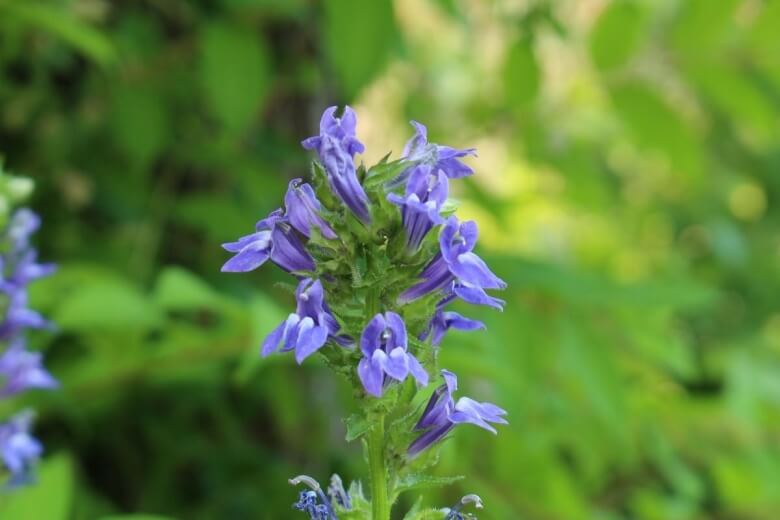
Moving from late summer into early fall, the Great Blue Lobelia can make a bold statement in your native New Jersey garden. Growing upright on a spike, these deep blue flowers bloom best in partial shade to full sun. They need some space, growing up to four feet tall, and do best when planted a foot or so apart. If one of your primary goals is to attract pollinating insects, butterflies, and even hummingbirds, the Great Blue Lobelia is an ideal choice.
Fall
Maryland Golden-Aster (Chrysopsis mariana)
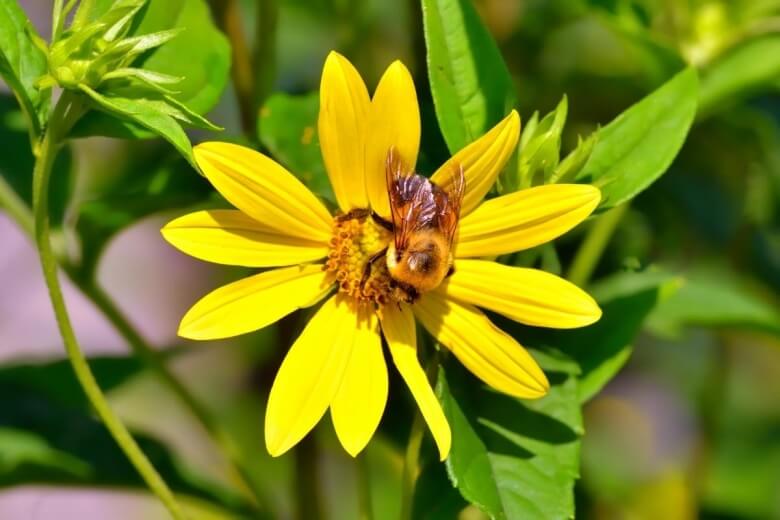
Fall typically brings brilliant palettes of burning reds, warm oranges, and golden yellows. The Maryland Golden-Aster is no exception. While Maryland is in its name, this easy-care perennial is a native New Jersey plant, thriving in most sections of the state. It does best in full sun with moist to wet soil. It will serve as a pleasant ground cover until golden flowers bloom sometime around August and as late as October.
Winter
Christmas Fern (Polystichum acrostichoides)
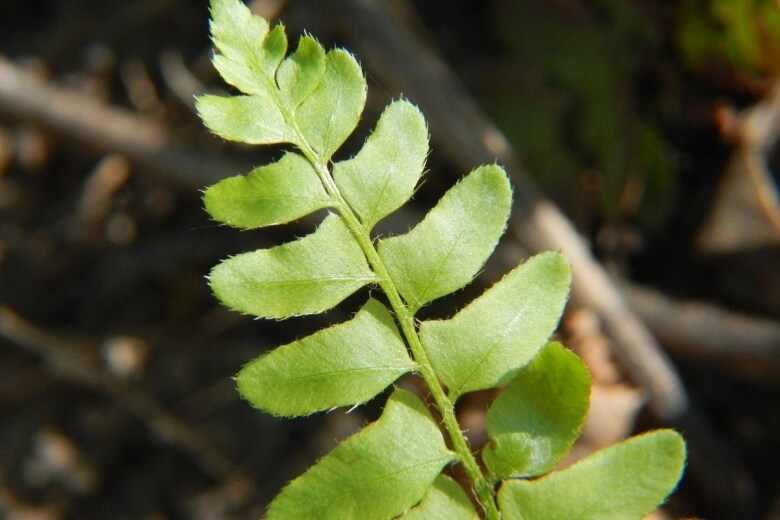
If you like some green in your garden year-round, check out the Chistmas fern. This robust plant maintains its verdant color until Santa’s made his rounds. Its one-to-two-foot fronds are leathery and a glossy green year-round. When new fiddleheads emerge in early spring, they have a more silvery color and green quickly as the fronds mature. If you can provide it with well-drained soil in shade, it is an easy plant to establish and makes a beautiful border. It does clump rather than carpet as some other ferns might, so may not be the best choice if you’re seeking a smooth, uninterrupted look.
Summary
So, as you can see, there are any number of reasons to grow native New Jersey plants. You might want to ensure you’re cultivating a thriving, beautiful garden with strong healthy plants. You may want to show your support for local farms and communities. You might want to do your part to ensure a better environment by helping ensure we’re leaving a smaller carbon footprint or providing cleaner water quality.
Whatever your motivation, “growing native” is a positive gardening choice. Make use of quality resources like The Native New Jersey Plant Society and Jersey-Friendly Yards to help you choose the best native plants for your New Jersey region and county and find the best local garden centers and nurseries to source them. “Grow native” to green up your garden with native New Jersey plants.
